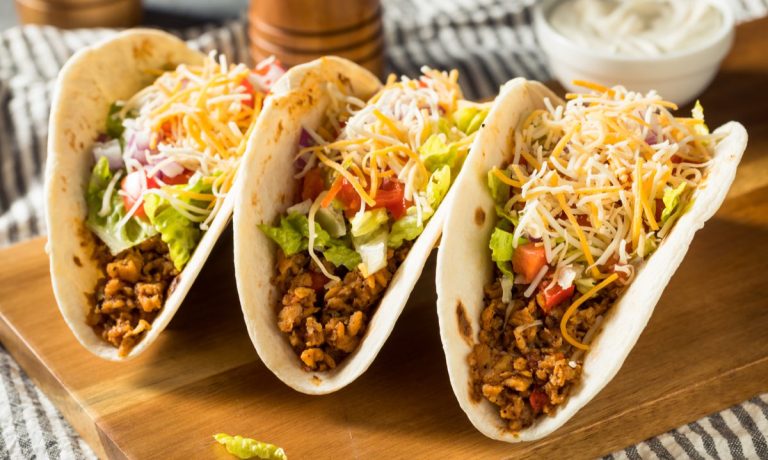As restaurants continue to deal with soaring food costs, inflation is having an impact on menus. Consider June, when short supply of chicken wings and rising costs prompted Wingstop to launch a virtual brand called Thighstop, swapping wings for thighs.
Read more: Wingstop’s New Virtual Brand ‘Thighstop’ Turns Chicken Shortage Into Opportunity
While this may have been a particularly dramatic example, many restaurants are making similar changes on a smaller scale, monitoring food costs to focus on menu items that make more sense from an economic standpoint.
James Marcus, partner and operator of Capital Tacos, a fast-casual Tex-Mex restaurant chain in Florida, spoke with PYMNTS about the challenges posed by skyrocketing inflation and about how restaurants can get imaginative to mitigate the impact.
“I’m not the youngest guy in the room anymore, and I’ve never seen anything like this,” he said. “I don’t know too many people that have. [Inflation is] impacting everything. … We have to look at our individual components of our business, all day, every day. … Now, you can’t set your menu and forget it. … You set your menu, and then you look at your suppliers and decide what change you need to make on a pretty much every shipment basis.”
The Tip of the Iceberg
Advertisement: Scroll to Continue
The U.S. Bureau of Labor Statistics (BLS) Consumer Price Index (CPI) found that, in February, food away from home (i.e., restaurant food) prices rose 6.8% compared to January 2021, and they were 0.4% higher than just the previous month.
Granted, these figures, which describe what customers are paying, do not perfectly reflect the inflation that restaurants are experiencing, since many restaurants may choose to absorb some of the cost increases.
For Capital Tacos, for instance, Marcus said, “We’ve borne the vast majority of it.”
Other food categories are seeing even higher inflation, with February food at home (i.e., grocery) prices up 8.6% year over year and up 1.4% month over month. Additionally, the CPI stated that overall inflation for the month hit 7.9%.
See more: Highest Grocery Inflation in 40 Years has Consumers Running to Big-Name Brands
Marcus said he believes that the numbers on the public record do not describe the challenges restaurant operators are actually facing, however.
“I have great doubts that the official inflation rates are even close to the real impact that everyone’s feeling,” he said. “One particular protein that we bought for five years for, I think, $30 a case. Last week, it was $124 a case. So, from 30, to 124 — that’s not 7.9%.”
Smaller businesses across the United States are feeling the impact. Research from PYMNTS’ March study, “Main Street Economic Health Survey: Navigating Economic Uncertainty,” created in collaboration with Melio, found that 54% of Main Street businesses are concerned about the obstacle that inflation poses going forward, and 23% consider this their single greatest challenge right now.
Get the study: Main Street Economic Health Survey
Possibilities and Permutations
Marcus noted that, given the highly variable nature of inflation right now, with some foods becoming dramatically more expensive and others much less affected, there are opportunities to approach the restaurant’s menus in such a way that the company can generally avoid jacking up prices.
“The positive part of this has been that for us, and I assume for everyone else, everything didn’t move up at the same [time],” Marcus said. “It became this very complex game of like six-dimensional chess.”
He noted that the company is monitoring items’ prices, as well as offering and promoting specials made with foods not as impacted by inflation. He added that the chain’s research and development (R&D) team has a back catalog of ideas. As such, the company can “toggle” these ideas with that week’s prices to offer the most cost-effective items.
Moreover, by using digital menu boards to emphasize these foods, the company can further drive sales of the most margin-friendly items on offer.
“Now it’s like, ‘Let’s show everybody that they should try to eat these five things because they’re reasonably cost right now,’” he said.
The Foreseeable Future
Marcus noted that inflationary challenges have prompted the company to be far more active than in past years in seeking out predictions about upcoming market fluctuations. He explained that he has been emailing suppliers asking about their expectations and taking this information into account when making plans for the future.
“To me, what’s underappreciated is that we in the restaurant business have a much greater ability to manage this than it would seem,” he said. “But it’s not easy, and it takes that being nimble, it takes doing the analysis, and it takes … putting to the forefront in that moment the [lower-cost] things that people like.”




